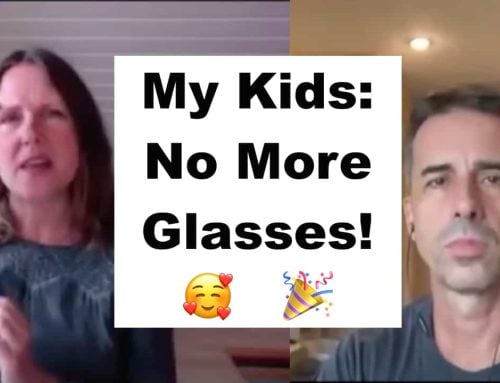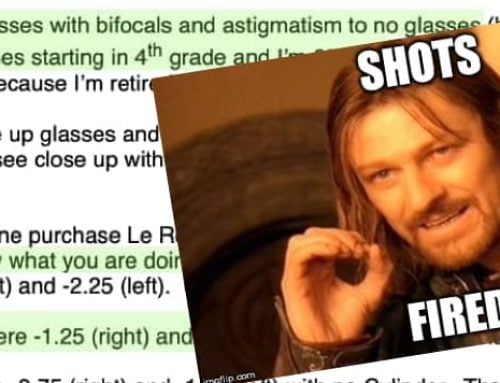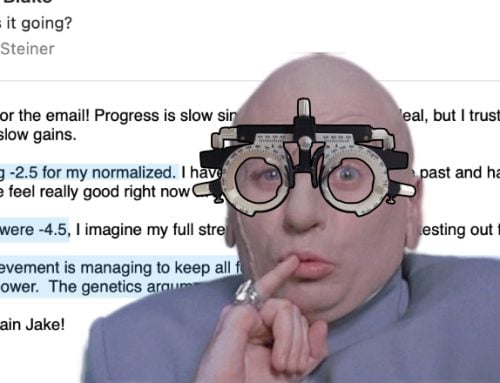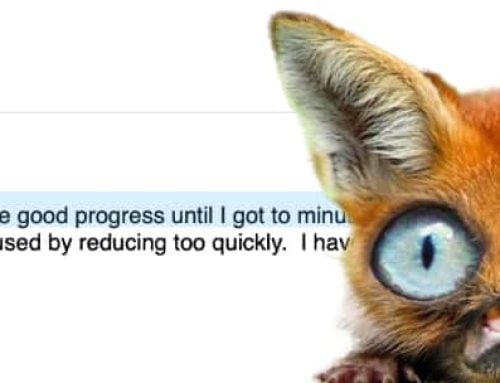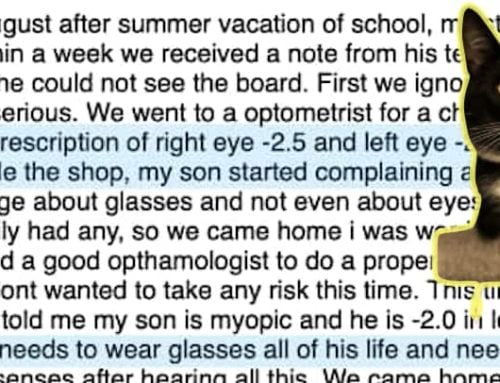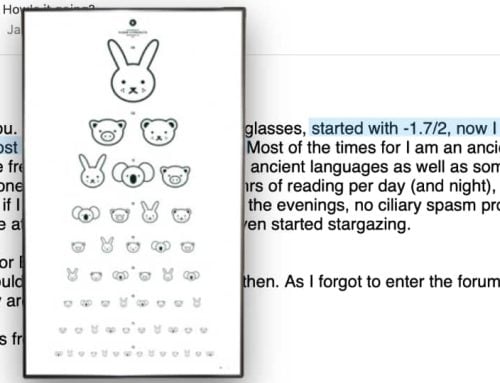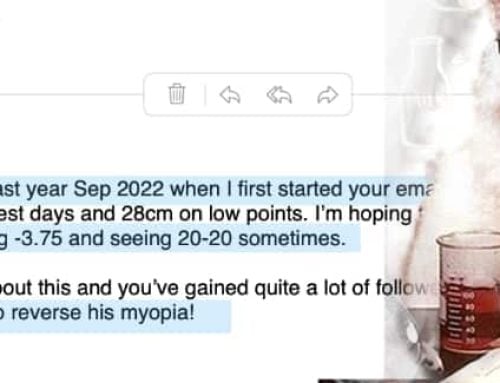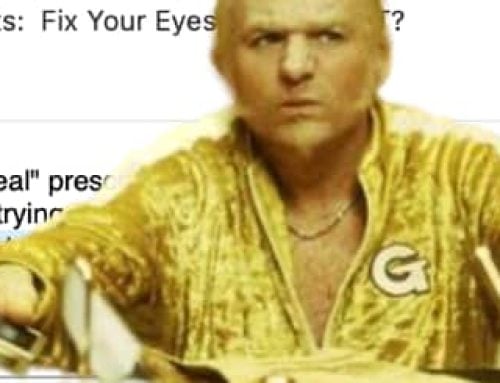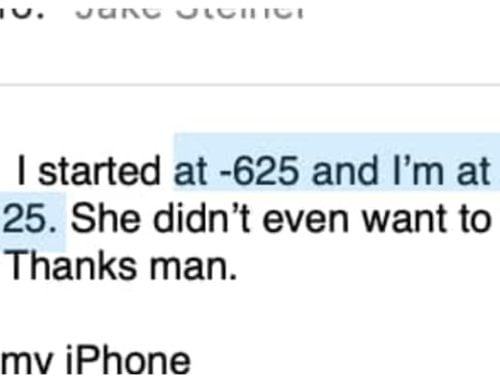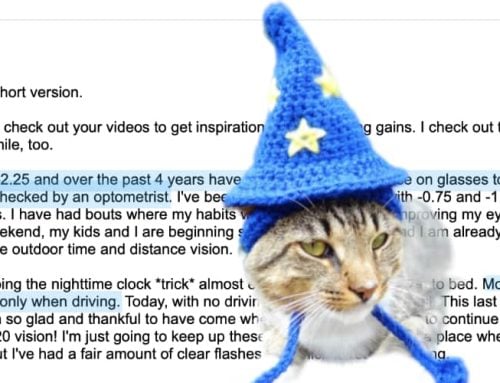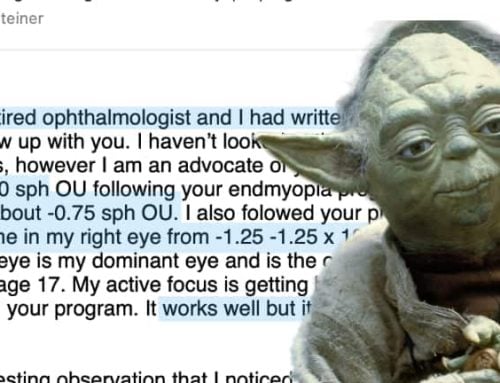I was told recently that things around here started looking quite professional. Cat meme, to fix that entire misconception.
If you’re a regular reader here, you know that it’s a good idea not to be squinting at things. You can blink, especially if you understand active focus, and get a much better result than squinting. You’ll also avoid all sorts of squinty-wrinkles in the long run! ;)
Why the squint topic today?
It’s a quick aside along with a progress report from Nate, helping his 10 year old son reverse a small amount of optometrist diagnosed myopia. Lately there’s been a bit of squinting happening apparently, but it’s really the other parts of the story that really merit a read:
It’s been a while since I have posted anything. I was reminded by the last blog post that just before I found out about the possibility of myopia rehab, I went for Lasix surgery. I was rejected, told that I was not a good surgical candidate, mostly because of my job (I am a pathologist). At the time, I was very disappointed, but how glad I am now! This rehab, while much slower, is just better.
My question today is about my 10 year old son, who we started in the program about 15 months ago. He has never worn glasses, but was examined and prescribed -1.25 lenses just before we started the program. When he started, we he was able to read the 20/50 line on the snellen. He has been really good about using +2.75 lenses for reading and school. I periodically test him, and he has made good -if slow-progress. He passed the vision screen by the nurse at school this year. When we started the program last year I asked his teacher to move him to the front of the classroom so that he could read the chalkboard. However, this year his teacher moved him to the back row in the classroom, and he can still read the chalkboard. He is doing well in school.
His vision is much better. The last time I tested him he read the entire 20/25 line, and got 2 letters right on the 20/20 line, which is pretty good, although not perfect.
Lately I’ve noticed him squinting on occasion to see something in the distance-which he didn’t used to do. It that a symptom of his vision improving-perhaps he is close enough to the “edge of the blur” that now he can squint to clear it, whereas before he couldn’t.
Any thoughts on this?
If you are a member, you can access the full thread here.
Here’s the thing. If you child is squinting, in a scenario other than what Nate describes, there is definitely a vision problem in progress. Too much time with smartphones, tablets, laptops, books, you’re definitely going to want to start taking measures to deal with the symptom. Squints are very often a sign of NITM myopia in children (who aren’t already wearing glasses).
I’d highly recommend not going for minus lens prescriptions with a low myope, just-diagnosed child. Of course my opinions while entirely professional, are also unsanctioned and unlicensed by any for-profit optometry establishment, so take this however you will. Nate’s experience should be a good illustration for you why you may put some Internet cat meme’s to use in your response to the optometrist lens-sales recommendation:

So many creative ways to say NO. Try them all!
In Nate’s case and the child squint, a bit more investigation is required. Consider that Nate reversed his son’s myopia from a measured 20/50 to a current 20/25. That is very nice progress, his child is much more consciously aware of eyesight, and a bit of inquiry as to what effect the squint has is necessary, to figure out what is currently happening there. If your own children are showing early warning signs of myopia or have been diagnosed already, it’s high time to start reading about myopia causes, or drop me a line for a possible spot in BackTo20/20.
There’s also the whole category of child myopia related topics to explore, here on the blog.
Cheers,
-Jake



